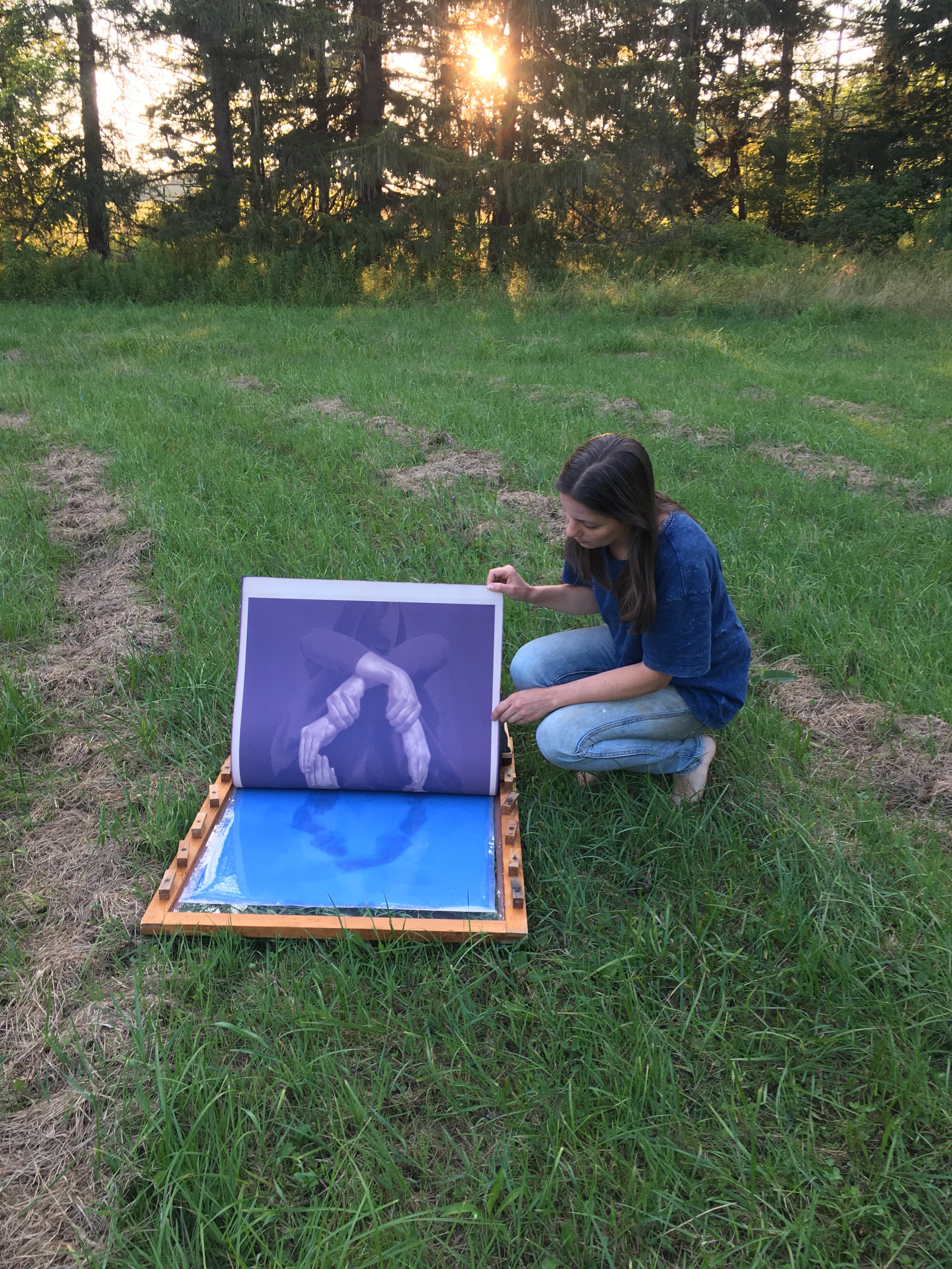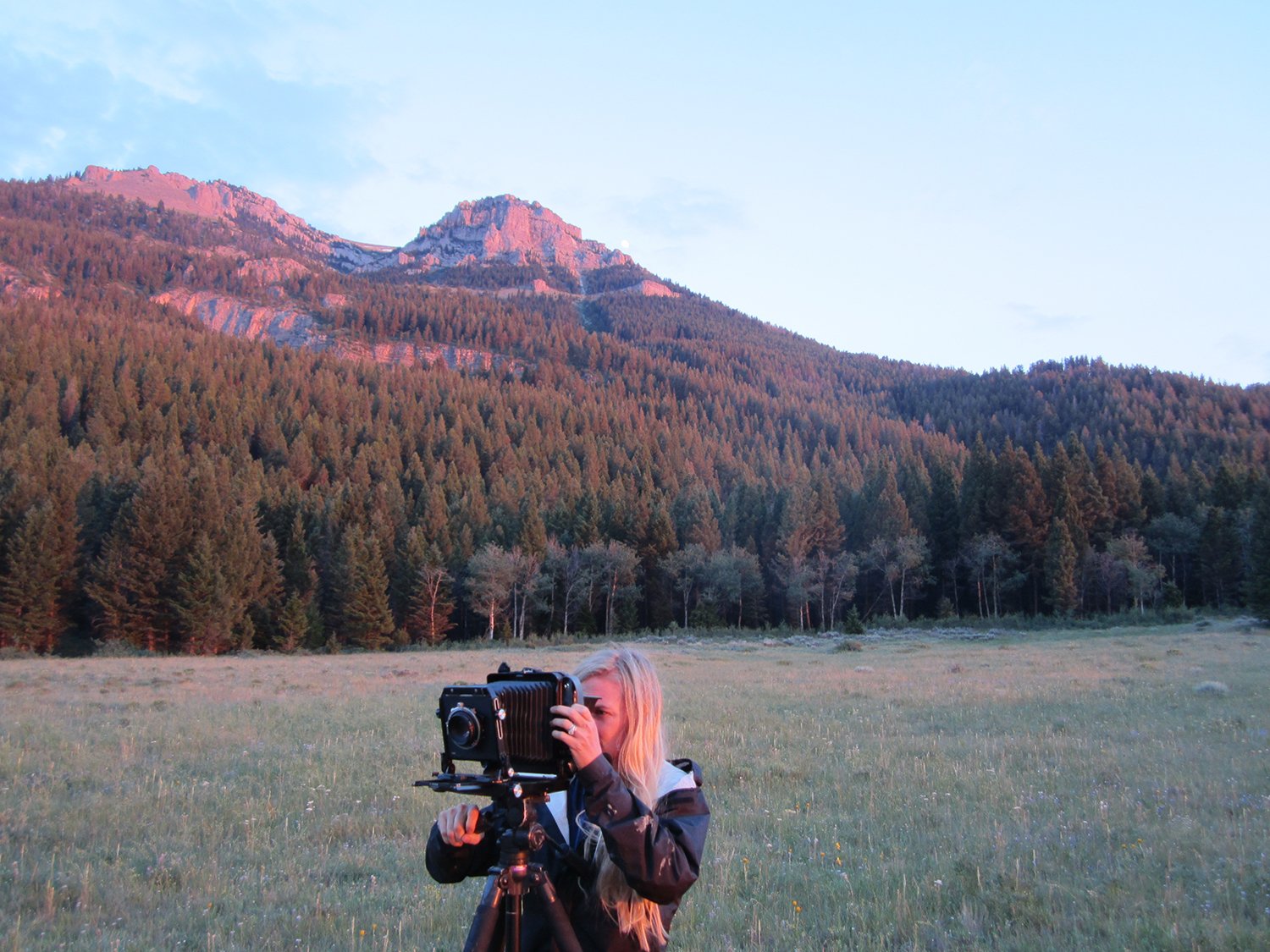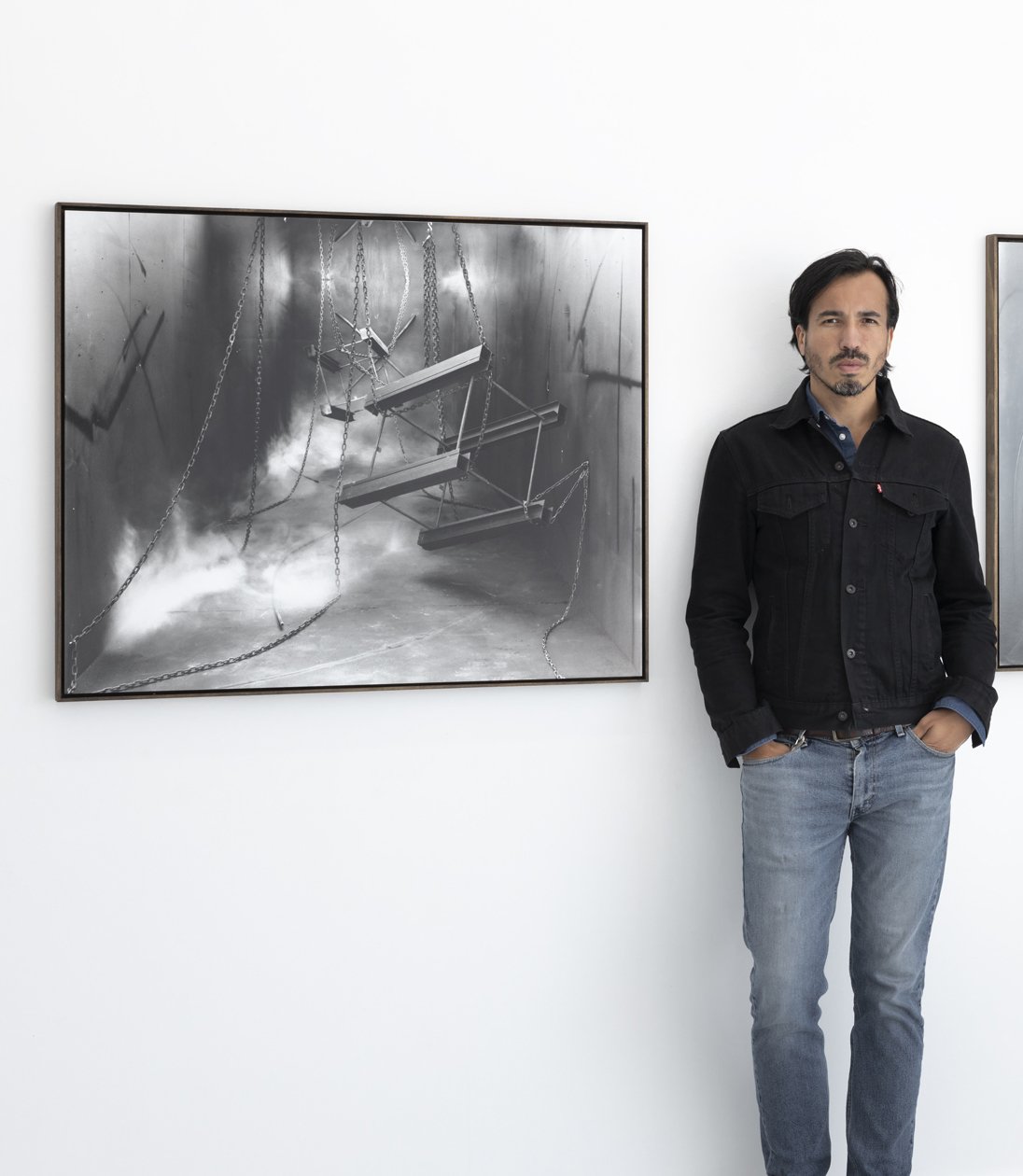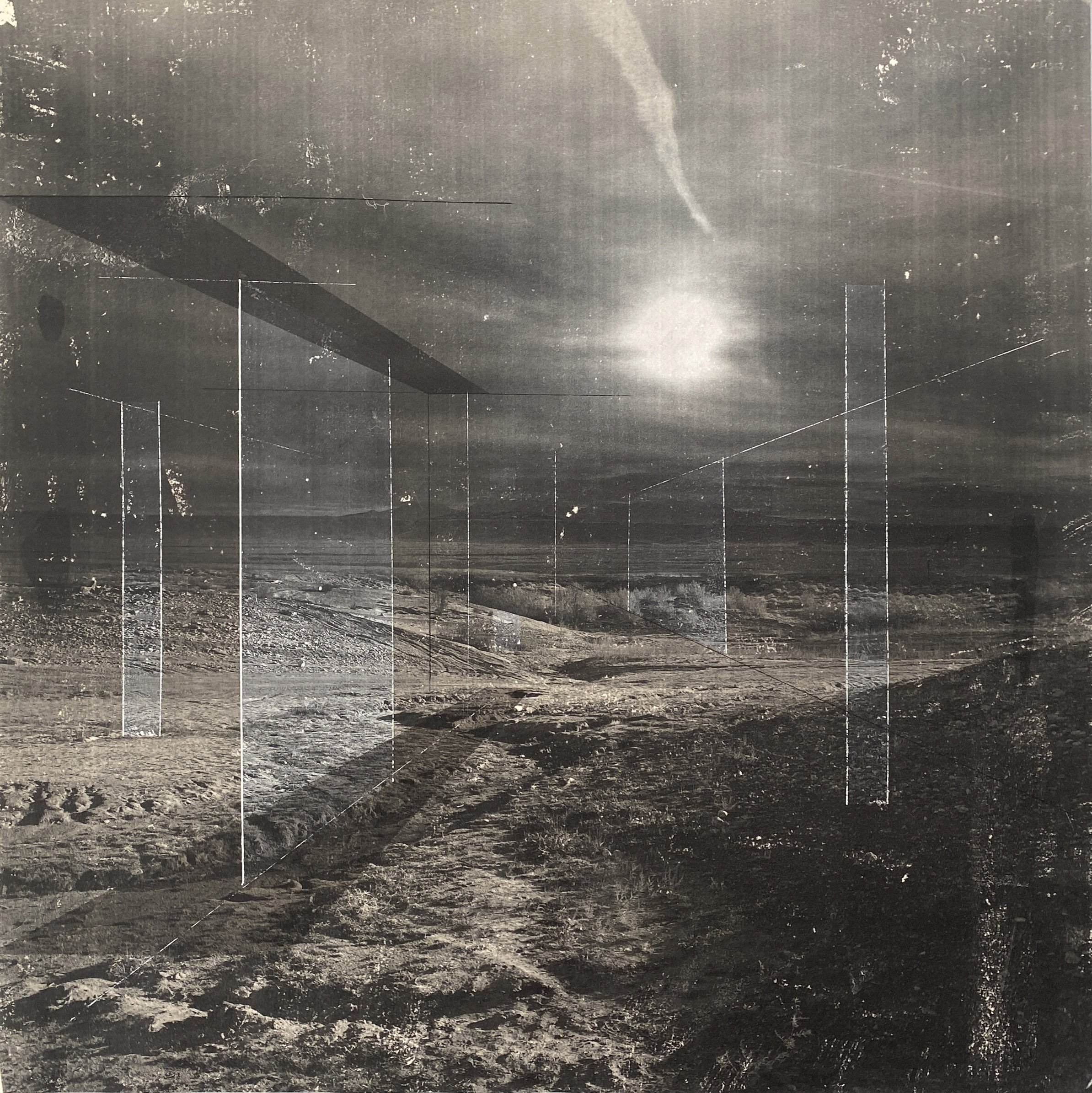May 12 - 15, 2022
Booth D22
Exhibiting Artists: Christine Elfman, Ansley West Rivers, and Rodrigo Valenzuela
Christine Elfman
Fragment IV, 2019 (Variation I)
Lichen Dye on Paper (anthotype)
14.50 x 11.50 in [36.83 x 29.21 cm]
CHRISTINE ELFMAN
Showing work from All solid shapes dissolve in light and Blue Pictures
Bearing witness to the natural cycle of growth and decay, the anthotype is a photograph made from the same components that eventually facilitate its entropy. Christine Elfman’s fading pictures embody the constant transformation of objects, images, and memory. The images develop slowly: sitting outside for a month, the sun bleaches paper saturated with light-sensitive natural dyes. Once complete, these unfixable photographs slowly fade from the very same light that allows them to be seen. Elfman has coated many of her anthotypes with resin, prolonging their lifespan. Like an insect encased in amber, the resin acts as a preservative, slowing the breakdown of the dye molecules. When paired with gold toned iron-silver prints, the images emphasize a tension between the archival impulse and ephemerality of photography and the subjects themselves.
Christine Elfman
Fragment VI, 2020 (Variation I)
Lichen Dye on Paper (anthotype)
15 x 19 in [38.10 x 48.26 cm]
“We photograph to define, hold, capture things. However, pictures remind us of everything left undescribed and unknown. Early photographers were obsessed with fixing the image, so it would last forever. Yet experience shows us that the more you try to hold something still, the more it’s ruined. Taking a picture is like catching a bird for a collection, or turning a person into a statue. The subject matter of my work reflects this desire for security. However, the materiality of the prints acknowledges the necessity of change. This ruin - the fading - is the subject, medium, and fate of my photographs. And in their fading, they’re living, changing slowly, imperceptibly over time.”
— Christine Elfman
Christine Elfman
Cloth Water Stone II, 2021 (Variation II)
Lichen Dye on Paper (anthotype, resin coated)
Frame: 40.50 x 32 in [102.87 x 81.28 cm]
Christine Elfman
Rock Wall I, 2022
Gold Toned Iron Silver Print
Frame: 30 x 37 in [76.2 x 93.98 cm]
Edition varée 1/2 + 1AP
Christine Elfman
Reproduction II, 2021 (Variation I)
Lichen Dye on Paper (anthotype)
20 x 16 in (50.8 x 40.64 cm)
Christine Elfman
Fold, 2020 (Variation III)
Lichen Dye on Paper (anthotype)
19 x 15 in [48.26 x 38.10 cm]
Christine Elfman
Fragment VII (triptych), 2021 (Variation I)
Left & Right: Lichen Dye on Paper (anthotype, resin coated) Middle: Silver Gelatin Print with Lichen Dye
Frame: 12.75 x 51 in [32.38 x 129.54 cm]
Christine Elfman
Reproduction III, 2021 (Variation III)
Lichen Dye on Paper (anthotype, resin coated)
16 x 20 in [40.64 x 50.80 cm]
Christine Elfman
Reproduction I, 2020 (Variation II)
Lichen Dye on Paper (anthotype, resin coated)
Frame: 17.5 x 14 in [44.45 x 35.56 cm]
Christine Elfman
Fragment VIII, 2021 (Variation I)
Lichen Dye on Paper (anthotype)
16 x 12.50 in [40.64 x 31.75 cm]
Ansley West Rivers
Salton Sea, Colorado River, California, 2017
Archival pigment print
Frame: 25 x 31 in [63.5 x 78.74 cm]
Edition 2/7 + 2AP
ANSLEY WEST RIVERS
Showing work from Seven Rivers
From source to sea, Ansley West Rivers has traveled extensively along the length of multiple American rivers since she began the Seven Rivers project in 2013. Traversing this wild territory through hiking or rafting over multiple weeks with a large format camera, West Rivers takes stock of both her subject matter itself, rivers, but also the relationship that unfolds between her and the natural landscape.
While Seven Rivers references the American tradition of landscape photography, the images diverge from traditional landscape portraiture by presenting constructed landscapes. By creating compositions on negatives, the artist intervenes in the image to prioritize a record of personal intimacy and emotion over straightforward documentation.
Ansley West Rivers
Lake Helena, Missouri River, Montana, 2019
Archival pigment print
Frame: 25 x 31 in [63.5 x 78.74 cm]
Edition 3/7
Ansley West Rivers
Columbia River, Revelstoke Town Park, British Columbia, Canada, 2018
Archival pigment print
Frame: 25 x 31 in [63.5 x 78.74 cm]
Edition 2/7
“As I witness the beauty, degradation and changes occurring on all rivers, I have come to view our watersheds with expanding emotion. The history of landscape photography in the United States is inspiring and complicated. I have climbed mountains, floated streams and walked through forests that have enthralled the lineage of artists before me. I too have lugged heavy equipment and negatives on my back in order to capture the landscapes that support us physically and emotionally. But I am not shooting to lure people out West, prove the magic of live oaks or depict the novelty of wilderness. My goal differs as it is directed by the present. I too seek to depict the beauty that exists within every riverbend, but I no longer see the infinite, I am faced with the finite. In my compositions, I create within the context of the past and the present to bring more clearly into view the lifespan of freshwater, with the hope of not creating evidence of lost landscapes.”
— Ansley West Rivers
Ansley West Rivers
Missouri River, Niobrara State Park, Nebraska, 2017
Archival pigment print
Frame: 41 x 51 in [104.14 x 129.54 cm]
Edition AP 1
Rodrigo Valenzuela
New Land (Untitled 8), 2021
Unique acrylic, toner and chalk on canvas
35.75 x 35.50 in [90.80 x 90.17 cm]
RODRIGO VALENZUELA
showing work from New Land
Rodrigo Valenzuela constructs scenes and narratives that point to the tensions between individuals and the societies in which they live. Much of Valenzuela’s work addresses the experiences of undocumented immigrants and laborers. In New Land, the artist considers the ideology of Manifest Destiny—a 19th century belief in the inherent superiority of white European-Americans and their predetermined fortune to conquer North America—as well as the failures of the Homestead Acts that quickened the settlement of public land west of the Mississippi River. Valenzuela’s images of barren desert landscapes, the iconographic American West, invoke both these ideas of expansion and opportunity as well as painful histories of erasure that resonate with present-day debates on immigration, border control, gentrification, and climate change.
Valenzuela creates his landscapes by transferring printing toner onto raw canvas, a laborious process made evident by the wear and tear of the material. For the artist, this technique mimics that of photocopies and is a metaphor for the arduous bureaucratic procedures that immigrants must endure. The artist has first-hand experience of this as he emigrated from Chile to Canada and then to the United States. For many years, Valenzuela worked in the construction industry, a background often reflected in his installation materials, such as drywall and scaffolding, and in his videos. In New Land, references to architecture and interior spaces are superimposed on the landscapes, taking the form of lines and boxes that the artist describes as “transition zones” and “structures built out of desire.”
Rodrigo Valenzuela
New Land No. (Untitled 1), 2021
Unique acrylic, toner and chalk on canvas
36.50 x 45 in [92.71 x 114.30 cm]
“The history of landscape painting is about male domination. Most of the romantic paintings we encounter from the 19th century, for example by J.M.W. Turner and John Singleton Copley, contain a Western mentality of conquering nature and a sense of entitlement to land ownership. As an immigrant or Latino or poor person, I have different fantasies. We day laborers work on the land, but we do not own the land. In painting culture, you are the owner of the landscape.”
— Rodrigo Valenzuela
Rodrigo Valenzuela
New Land No. (Untitled 7), 2021
Unique acrylic, toner and chalk on canvas
37 x 44.50 in [93.98 x 113.03 cm]
Rodrigo Valenzuela
New Land No. (Untitled 24), 2020
Unique acrylic, toner and chalk on canvas
27 x 34 in [68.58 x 86.36 cm]
ABOUT THE ARTISTS
-
Rodrigo Valenzuela, Santiago, Chile 1982. Lives and works in Los Angeles, CA, where he is an assistant professor at University of California, Los Angeles School of Art and Architecture. Valenzuela studied art history and photography at University of Chile (2004), holds a BA in Philosophy at The Evergreen State College, Olympia, WA (2010) and an MFA at University of Washington, Seattle, WA (2012). Valenzuela is the recipient of the 2021 Guggenheim Fellowship in Photography and Smithsonian Artist Research Fellowship. He has received the Joan Mitchell Award, Art Matters Foundation Grant, and Artist Trust Innovators Award.
Recent solo exhibitions include: New Museum, NY (2019); Jordan Schnitzer Museum of Art, Eugene, OR (2018); Orange County Museum, Santa Ana, CA (2018); Portland Art Museum, Portland, OR (2018); Ulrich Museum of Art, Wichita, KS (2016); Frye Art Museum, Seattle, WA (2015). Public collections include: Whitney Museum of American Art, New York, NY; Los Angeles County Museum of Art, Los Angeles, CA; Museum of Fine Arts, Houston, TX; Frye Art Museum, Seattle, WA; and The Microsoft Art Collection, Redmond, WA.
-
Christine Elfman received her MFA from California College of the Arts, and BFA from Cornell University. Her interest in ephemerality has been influenced by family photographs and her work with historic collections at the George Eastman House, University of Rochester Rare Books Library, and the Berkeley Art Museum. She has worked with and taught experimental photographic processes for over 15 years, beginning with the wet-plate collodion and albumen printing processes as an intern for France Scully Osterman in Rochester, NY. She has had solo exhibitions at Penumbra Foundation (New York), Philadelphia Photo Arts Center, University of the Arts (Philadelphia), Gallery Wendi Norris (San Francisco) and Somarts (San Francisco). Awards include a Light Work Grant in Photography, Penumbra Workspace Residency, Saltonstall Foundation Residency, and San Francisco Artist Award. Her work has appeared in The San Francisco Chronicle, Photograph Magazine, Der Greif, Loupe Magazine, Humble Arts Foundation, SF Weekly, and other publications. Elfman has taught art at Bowdoin College, Cornell University, San Francisco Art Institute, and lives in Upstate New York.
-
Ansley West Rivers was born in 1983 in Atlanta, Georgia and received her BFA from the University of Georgia and MFA from the California College of the Arts. In 2019 she had her first solo museum exhibition at Telfair Museum, Savannah, GA. West Rivers work is featured in many public and private collections including the Museum of Contemporary Art of Georgia, The Judge Collection, LaGrange Art Museum and The Mayo Collection. Additionally, West Rivers' work has been shown at The Wiregrass Museum (Dothan, AL), Wattis Institute of Contemporary Art (San Francisco, CA), Sous Les Etoiles Gallery (New York, NY), Burrard Arts Foundation (Vancouver BC), The David Brower Center (Berkeley, CA), Kala Art Institute (Berkley, CA), Hathaway Gallery (Atlanta, GA), The Print Center (Philadelphia, PA). She currently lives with her husband and two children in Victor, Idaho.






















